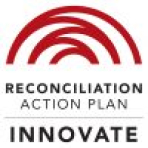Taking on an apprentice recruit or trainee is a great way to prepare your organisation for skills gaps you expect to open up in the future. Not only can you tailor the candidate’s training to meet your specific requirements, you’ll often build a rapport with your employee that could boost retention.
However, employing an apprentice or trainee is different to recruiting a regular staff member. You may have to alter your expectations and update your hiring practices, as well as make a number of adjustments to internal procedures.
Apprenticeship Central is designed to simplify the process of finding apprentices and trainees for your business. If you’re unsure of how to get started, there are various resources and a sophisticated search function available for companies that sign up to the site.
If you’re in the process of choosing an apprentice or trainee, refer to this checklist for ideas on how to best prepare for your new recruit.
Select a suitable qualification
There are hundreds of apprenticeship and traineeship qualifications available, so you’ll need to explore which ones are most suitable for your vacancy. Contact your local Apprenticeships Network Provider, such as BUSY At Work, for guidance if you’re having trouble choosing the right one.
Write a quality position description
Finding the best candidates will require an accurate and detailed position advertisement. Apprenticeship Central’s Position Description Builder can help businesses generate precise overviews of the roles they are trying to fill, with a simple step-by-step process that is fast and effective.
Check eligibility for incentives
The Australian government offers a range of financial incentives for organisations hoping to take on apprentices and trainees. Your Apprenticeships Network Provider can provide you with information regarding your potential eligibility.
Adjust recruitment processes
Apprentices and trainees often have little experience in the positions for which they are applying. This may require an alternative approach to your traditional hiring practices. Focus less on skills and previous expertise and instead try to gauge enthusiasm, potential and relevant hobbies or interests.
Prepare the workplace
You may need to make several changes to the workplace to accommodate your new starter. Perform a risk assessment for the tasks they’ll be performing to ensure they are suitable and ensure mentors and supervisors are fully versed on their responsibilities. Establish regular meetings with your apprentice or trainee to monitor their progress.

